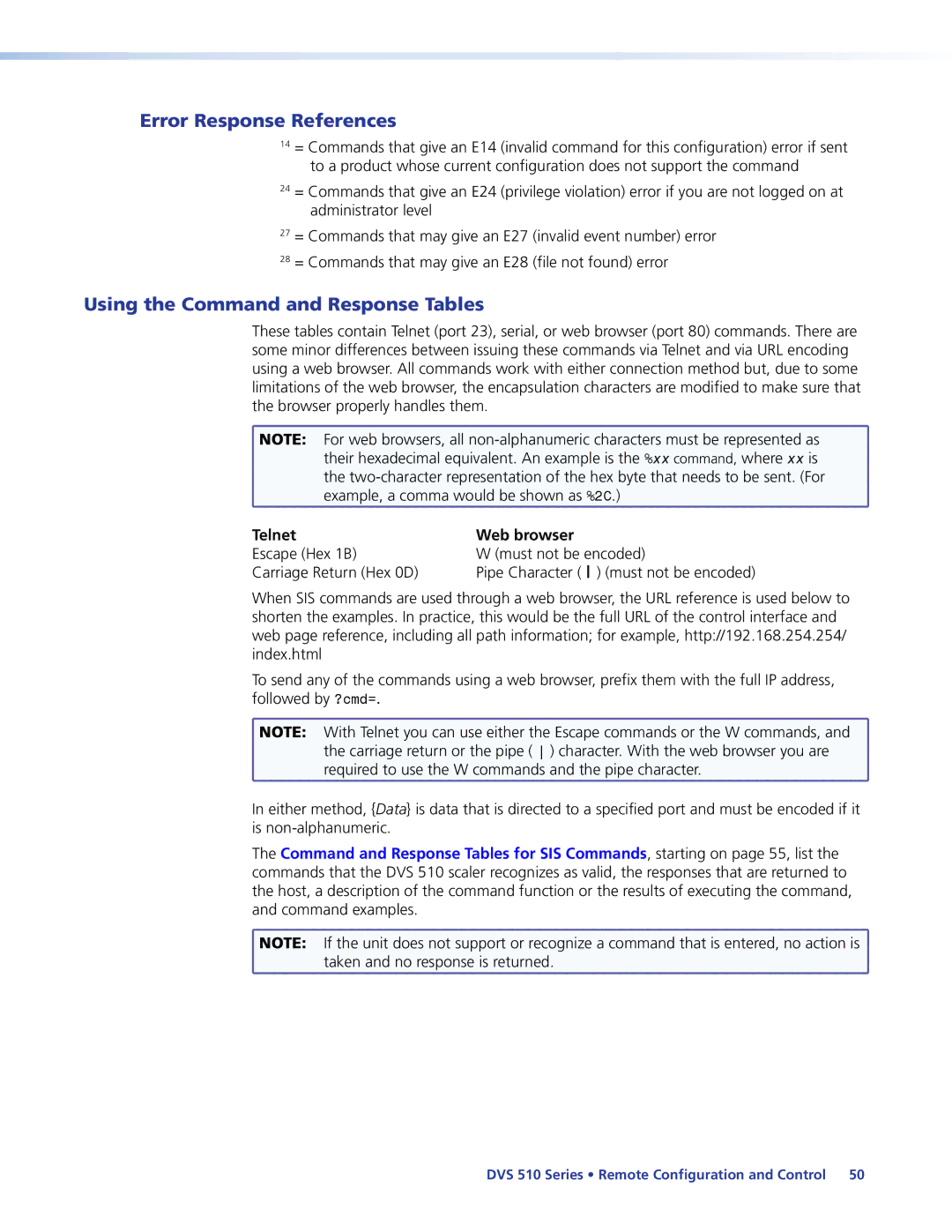
Error Response References
14= Commands that give an E14 (invalid command for this configuration) error if sent to a product whose current configuration does not support the command
24= Commands that give an E24 (privilege violation) error if you are not logged on at administrator level
27= Commands that may give an E27 (invalid event number) error
28= Commands that may give an E28 (file not found) error
Using the Command and Response Tables
These tables contain Telnet (port 23), serial, or web browser (port 80) commands. There are some minor differences between issuing these commands via Telnet and via URL encoding using a web browser. All commands work with either connection method but, due to some limitations of the web browser, the encapsulation characters are modified to make sure that the browser properly handles them.
![]() NOTE: For web browsers, all
NOTE: For web browsers, all
their hexadecimal equivalent. An example is the %xx command, where xx is
the
Telnet | Web browser |
Escape (Hex 1B) | W (must not be encoded) |
Carriage Return (Hex 0D) | Pipe Character ( ) (must not be encoded) |
When SIS commands are used through a web browser, the URL reference is used below to shorten the examples. In practice, this would be the full URL of the control interface and web page reference, including all path information; for example, http://192.168.254.254/ index.html
To send any of the commands using a web browser, prefix them with the full IP address, followed by ?cmd=.
![]() NOTE: With Telnet you can use either the Escape commands or the W commands, and
NOTE: With Telnet you can use either the Escape commands or the W commands, and
the carriage return or the pipe ( ) character. With the web browser you are required to use the W commands and the pipe character.
In either method, {Data} is data that is directed to a specified port and must be encoded if it is
The Command and Response Tables for SIS Commands, starting on page 55, list the commands that the DVS 510 scaler recognizes as valid, the responses that are returned to the host, a description of the command function or the results of executing the command, and command examples.
![]() NOTE: If the unit does not support or recognize a command that is entered, no action is
NOTE: If the unit does not support or recognize a command that is entered, no action is ![]()
![]() taken and no response is returned.
taken and no response is returned.![]()
DVS 510 Series • Remote Configuration and Control 50
